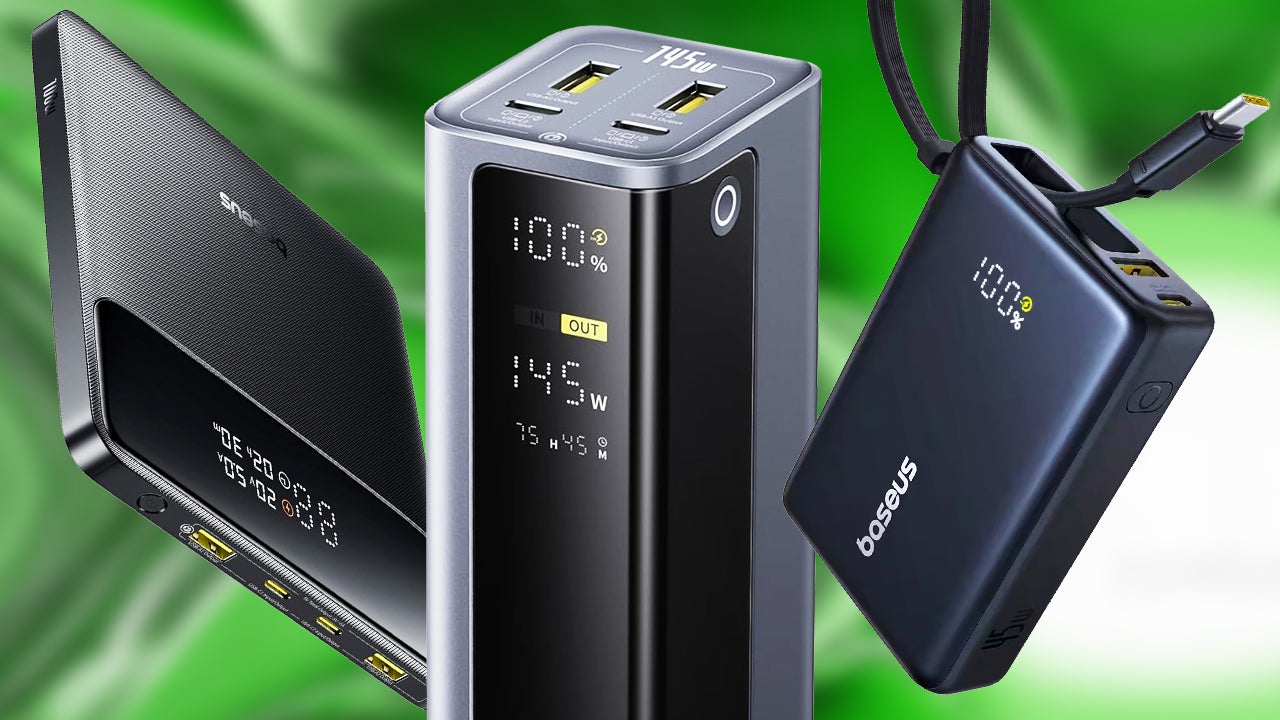Sonos needs a win. A problem-riddled update to the Sonos app over the summer almost completely sank the brand’s reputation, and the release of its Ace headphones was met with far less enthusiasm than the prominent home audio company anticipated. Fortunately, Sonos had something else up its sleeve: a new, reimagined version of its flagship soundbar that took a systematic approach to making a great sound profile even better. The Arc Ultra is here, and its 9.1.4-channel, bass-happy, Bluetooth-enabled system may be exactly what the audio engineers ordered to pull Sonos out of its slump.
Sonos Arc Ultra – Design and Features
From an aesthetics perspective, the Arc Ultra doesn’t differ much from the Arc. Its dimensions stretch an inch or so here, and a few ounces lighter there. But the Ultra is largely the same sleek-looking addition to your entertainment center or TV stand that its predecessor is known to be.
Under the hood, though, the Ultra had some serious work done. Sonos’ new flagship bar now has 14 total speakers (compared to the Arc’s 11), including a woofer, a set of up-firing drivers for Dolby Atmos content, and side-firing midrange drivers to improve the bar’s ability to simulate surround sound action from a single cabinet. The redesign is made possible largely by SoundMotion technology, something Sonos describes as “one of the most significant breakthroughs in audio engineering in nearly 100 years.” Marketing speak aside, this new tech focuses on crafting drivers that can do a whole lot more without much room to work with, which is the name of the game when it comes to soundbars. We’ll dive more into this later.
The same patented Sonos features are all back in the Arc Ultra, from the expansive world of wireless music streaming service options to built-in Alexa and Google Assistant compatibility, and of course the ability to work in tandem with other Sonos speakers around your house for a whole-home audio experience. And, just like the Arc, the Arc Ultra is able to seamlessly swap TV audio to a pair of Sonos Ace headphones for late-night listening. I didn’t have an Ace on hand to test this feature, but I have previously tested the Ace with the Arc, and it worked flawlessly. Hopefully not much has changed on that front.

Not usually one to stand pat, Sonos did introduce a few new (and long overdue) features with the Arc Ultra. The brand’s Trueplay technology, which is supposed to automatically adjust the speaker’s sound to match the acoustics of your listening space, is now available on iOS and Android after previously being an Apple-exclusive perk. And, interestingly, the Ultra now has Bluetooth connectivity options. Those who have been following Sonos since its early days remember how adamant it was about WiFi being superior to Bluetooth for audio quality. They’re right, of course. But it is significant to see that Sonos has finally accepted the convenience factor that Bluetooth offers, especially when a guest wants to quickly put something on.
One of the main blemishes that carries over from the Arc is the singular HDMI eARC port and unfortunate lack of HDMI passthrough inputs. The logic is somewhat sound here: modern TVs tend to have several HDMI ports and can effectively operate as an entertainment hub that all of your gaming and streaming devices can connect to. Still, though, it wouldn’t hurt to have at least one HDMI passthrough port available.
Sonos Arc Ultra – Performance
After setting up the Arc Ultra in the much-maligned Sonos app (the process was, thankfully, effortless and without issue), I immediately started surfing through my library of Dolby Atmos-outfitted content. With the Ultra’s driver configuration now standing at 9.1.4 compared to the Arc’s 5.0.2, and with Sonos itself claiming that with its Sound Motion tech, the new bar has better clarity, depth, balance and double the bass output, it was time to see what the fuss was all about.
Well. The hype is real. The bass is deeper, and more impactful. The Ultra’s height channels add more presence and immersion. The sound profile is incredibly balanced overall and adds noticeably more detail to an already-outstanding experience when compared to the Arc. I first cycled through a few scenes from Blade Runner 2049, with the Ultra proving to have far more low end than I anticipated, though not so much that its dedicated woofer overshadowed the Ultra’s midrange drivers and tweeters. After being captivated by the visceral sounds of the Vietnam war in The World’s Greatest Beer Run – machine gun fire, overhead choppers and all – I navigated over to an old favorite, Avengers: Endgame. While the movie isn’t necessarily revered for its Dolby Atmos mix, I was impressed by where the sound was placed when Thanos’ warship “rained fire” from above in the film’s pivotal action sequence. I played the same scene through my Arc, and while you do have to account for the bars being in different rooms with different acoustics, the Arc Ultra performed better in an environment that actually had taller ceilings for its upfiring drivers to bound sound off of.

Based on my time testing the Arc, I expected music through the Arc Ultra to sound great, and it once again exceeded expectations. The sound signatures weren’t as different as they were when I was testing with movie content, but the Ultra once again had more pronounced, precise bass notes that really helped to round out the tracks I was listening to. It was punchy for upbeat country songs by Shaboozey and dug deeper than I expected for thumpers like Kendrick Lamar’s Swimming Pools. I even thought Chappell Roan’s live Saturday Night Live performance sounded exceptional through the Arc, even with SNL broadcasts not exactly being lighting rods for great sound.
My only performance issues with the Arc Ultra are two-fold. First, while we do have the ability to adjust bass and treble, turn up or down height audio, and access features like Speech Enhancement or Night Mode, it feels like the app is in real need of a graphic EQ of some sort. Now, the bar itself sounds excellent out of the box. But most flagship soundbars give you the flexibility to tune your system’s audio to your exact tastes, with options like the Samsung HW-Q990D even adding perks like being able to increase or decrease the output of individual channels. I understand the notion of not messing with (relative) perfection, but let the audio nerds tinker, man.
Finally, that darn Sonos app. Fortunately, I never dealt with the widespread functionality issues that have tarnished the Sonos experience for so many. That said, I do have beef with parts of the interface. For instance, I can’t adjust the soundbar’s bass or height levels from the app’s “now playing” screen. Instead, I have to toggle over to my devices, tap on the Arc Ultra, and dive into its audio settings from there. It’s a small annoyance, but it was a consistent one whenever I wanted a little more bass or a little less height.
Sonos Arc Ultra – The Competition
There’s no shortage of soundbars trying to compete with a package as complete as the Sonos Arc Ultra, but we’re going to touch on the few that actually can. First, naturally is the Sonos Arc. There’s a bunch of Arc owners out there right now mulling whether to make the move to replace their bar with the Arc Ultra. As I’ve said, the Arc Ultra is a significant improvement over the Arc when it comes to sound quality. With that in mind, the Arc still gets you pretty darn close performance-wise. As an Arc owner myself, I would lean towards waiting for a discount (of which there are few in the Sonos world) to seal the deal on the upgrade. If you’re new to the Sonos world and trying to pick between the two, however, it’s worth it to spend the extra cash to get the better bar.
The bar best equipped to match (or, in some circumstances, eclipse) the Arc Ultra is Samsung’s HW-Q990D. It’s more expensive (though it goes on sale often), but Samsung’s flagship has its own wireless rear speakers and subwoofer. The Arc Ultra’s bass output and wide soundstage are both impressive, but they won’t be able to match the output of the real deal like the HW-Q990D can. You can, of course, invest in Sonos speakers like the Era 100 or 300 and Sonos Sub for your bass, but adding those pieces to the puzzle more than doubles the cost of an Ultra. By those metrics, the HW-Q990D represents a better value while still adding cinematic sound to your home.















